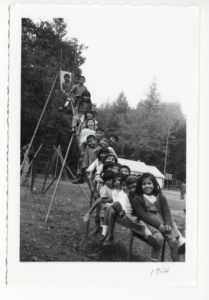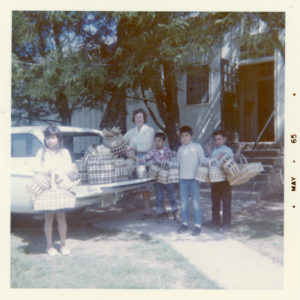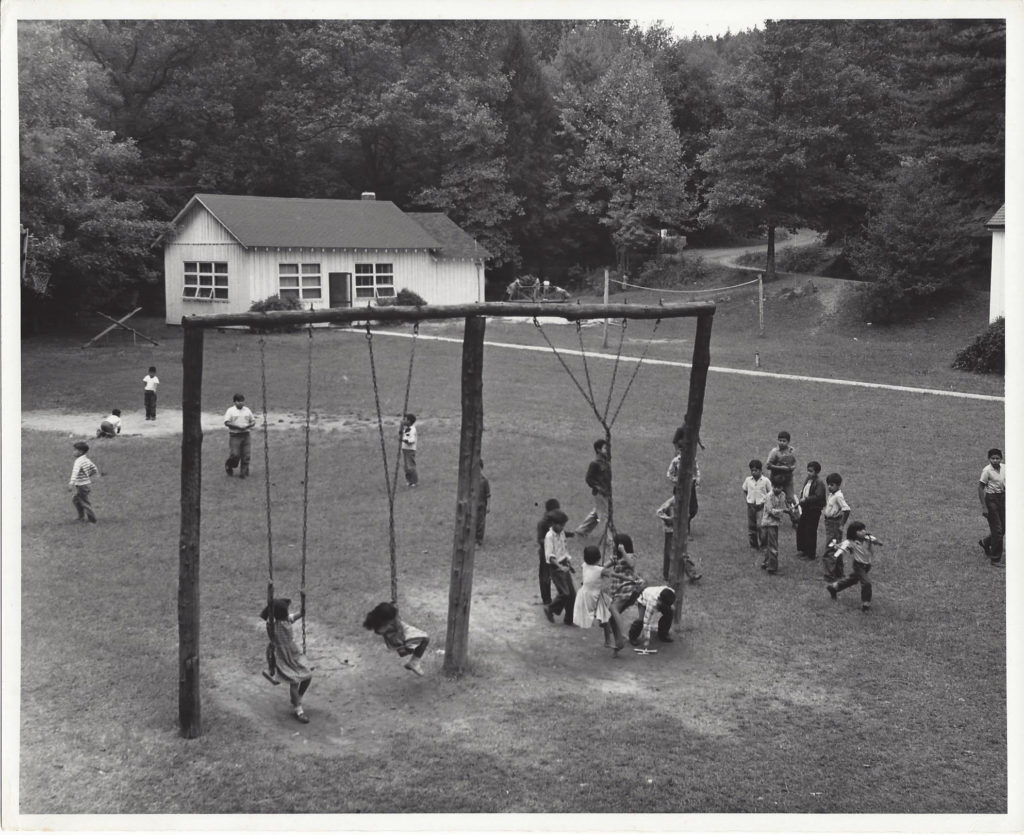By Trey Adcock and Gene Hyde, UNC Asheville
This article appeared in the Volume 1, Issue 2 Fall 2019 issue of the Appalachian Curator. Click here to view a PDF of the full issue.
By the time Snowbird Day School closed in 1965, about 550 Cherokee children had attended classes in this remote Western North Carolina school, located in the Cherokee community of Snowbird or Tuti Yi (as it is known in the Cherokee language). Quakers had originally run the school in Snowbird but by the beginning part of the 20th century the federal government, through the Bureau of Indian Affairs, assumed responsibility for establishing and providing educational services.

Snowbird Day School was opened in 1935 during a period of reform when boarding schools were being phased out but, ultimately, it was still largely designed to assimilate Cherokee youth into the broader Anglophone culture. At Snowbird, however, the assimilation story is complex, as the community imposed informal control over the school and its administrators in various ways. The ultimate legacy of the Snowbird Day School is one of fond memories for alumni as they recall forming lasting memories, relationships, and for many holding, on to their language. It is estimated that about 50 former Snowbird students are still living.
Recognizing the importance of the history of the school and particularly the stories of alumni, Trey Adcock, PhD, Director of American Indian and Indigenous Studies at UNC Asheville, with support from the Eastern Band of Cherokee lndians’ (EBCI) Tribal Council, oversaw a community-based archiving project to document the stories of those who attended Snowbird Day School. Adcock received a Public Engagement Fellowship from the Whiting Foundation, and used the Fellowship monies to work with tribal members to digitize historical documents and community photographs pertaining to the school. The collaborative project also had a mission to collect and preserve oral histories, most of which were conducted in the Cherokee language. The Fellowship also funded a book with community chosen images, a multi-media digital gallery and a traveling photography exhibit.

The project was co-coordinated by Adcock, who is a citizen of the Cherokee Nation, and Gilliam Jackson, an EBCI tribal member who grew up in the Snowbird community and is a 1st language Cherokee speaker. The project was conceived by and emerged from the Snowbird community of former students, and was shaped and molded by their input and energy. The final products and website belong to the Eastern Band of Cherokee Indians, specifically the Junaluska Museum in the Snowbird community.
Early in the process, Adcock and Jackson met with the Ramsey Library Digital Scholarship Support Team at UNC Asheville for help with the logistics of putting together such a project. The team includes an archivist and digital technologists who assisted with website design and creation. Adcock consulted with the archivist on best practices on metadata creation, scanning standards, photo organization and storage, and research skills for attending other archives. The archives provided access to a scanner and work station for use by Adcock’s students. This partnership was paramount to the successful completion of the project as Adcock, UNC Asheville students and community members learned about best practices and standards related to archiving. So while the final products were most certainly informed by the community voice, the community also picked up vital skills to carry forward to future archiving projects.

A clear example of the community benefitting directly from this project can be seen not only in the successful completion of the archiving products but also in the success of students from the community who worked on the project. One notable example of this is Dakota Brown, whose family is from Snowbird and who, as a senior at UNC Asheville, used the products collected from the project to develop a senior thesis to fulfill her History major requirements. Many of the products used in her thesis were oral histories and photographs she collected from family members and then archived as an Undergraduate Research Fellow under Adcock.
The collaboration between Adcock’s team, the Snowbird Community and UNC Asheville’s Ramsey Library Special Collections is an example of bridging the gap between archives, the academy and community. These reciprocal relationships are vital as community engagement continues to be an institutional priority. Lessons learned from this project will be carried forward into future collaborations.
Trey Adcock discussed the “Stories of Snowbird Day School” project at a Library Brown Bag Talk in UNC Asheville’s Special Collections in October 2018. A video of his talk is available here.
All photos were collected from members of the Snowbird community and are used by permission.
